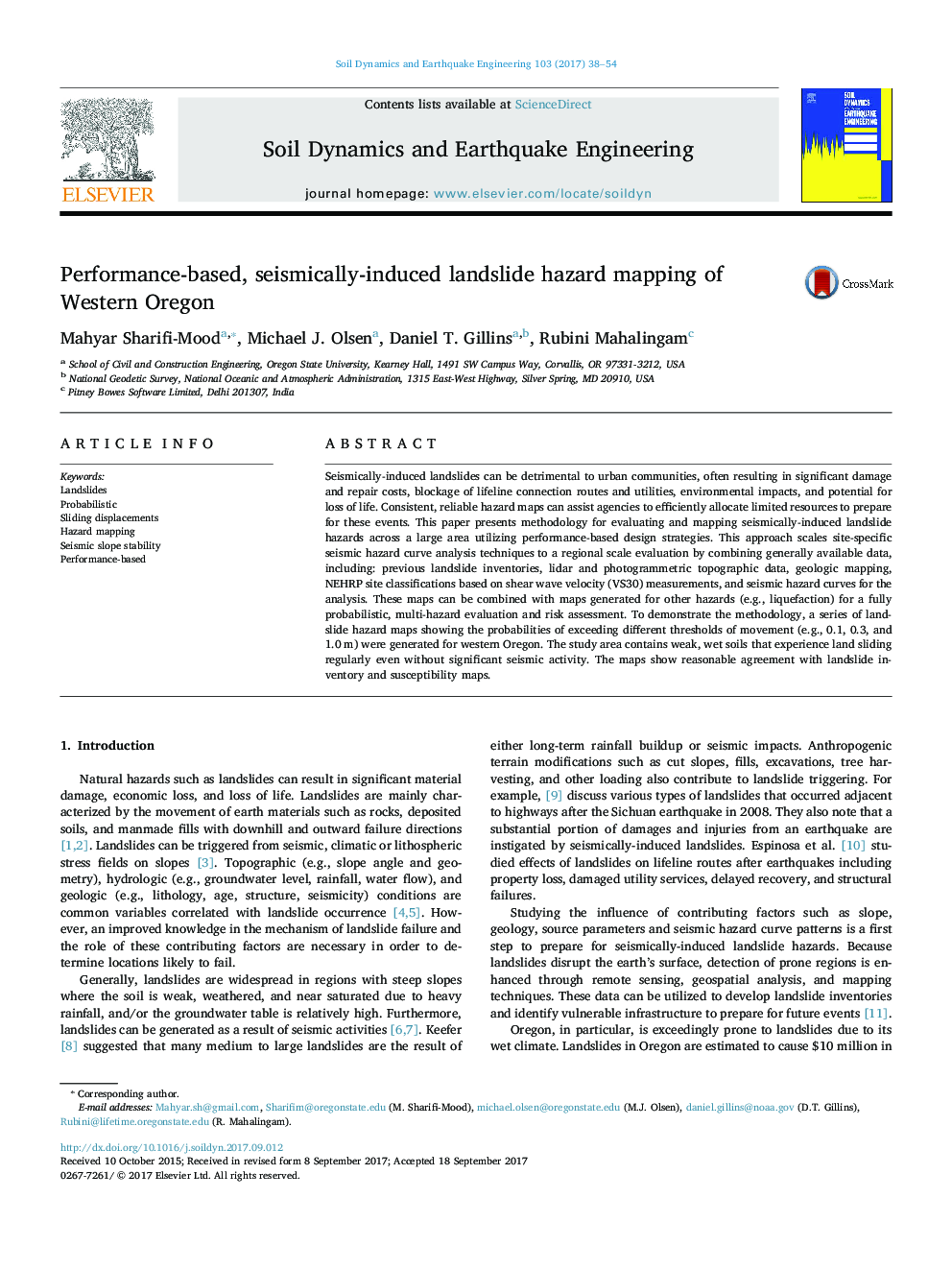| Article ID | Journal | Published Year | Pages | File Type |
|---|---|---|---|---|
| 4926961 | Soil Dynamics and Earthquake Engineering | 2017 | 17 Pages |
Abstract
Seismically-induced landslides can be detrimental to urban communities, often resulting in significant damage and repair costs, blockage of lifeline connection routes and utilities, environmental impacts, and potential for loss of life. Consistent, reliable hazard maps can assist agencies to efficiently allocate limited resources to prepare for these events. This paper presents methodology for evaluating and mapping seismically-induced landslide hazards across a large area utilizing performance-based design strategies. This approach scales site-specific seismic hazard curve analysis techniques to a regional scale evaluation by combining generally available data, including: previous landslide inventories, lidar and photogrammetric topographic data, geologic mapping, NEHRP site classifications based on shear wave velocity (VS30) measurements, and seismic hazard curves for the analysis. These maps can be combined with maps generated for other hazards (e.g., liquefaction) for a fully probabilistic, multi-hazard evaluation and risk assessment. To demonstrate the methodology, a series of landslide hazard maps showing the probabilities of exceeding different thresholds of movement (e.g., 0.1, 0.3, and 1.0Â m) were generated for western Oregon. The study area contains weak, wet soils that experience land sliding regularly even without significant seismic activity. The maps show reasonable agreement with landslide inventory and susceptibility maps.
Related Topics
Physical Sciences and Engineering
Earth and Planetary Sciences
Geotechnical Engineering and Engineering Geology
Authors
Mahyar Sharifi-Mood, Michael J. Olsen, Daniel T. Gillins, Rubini Mahalingam,
